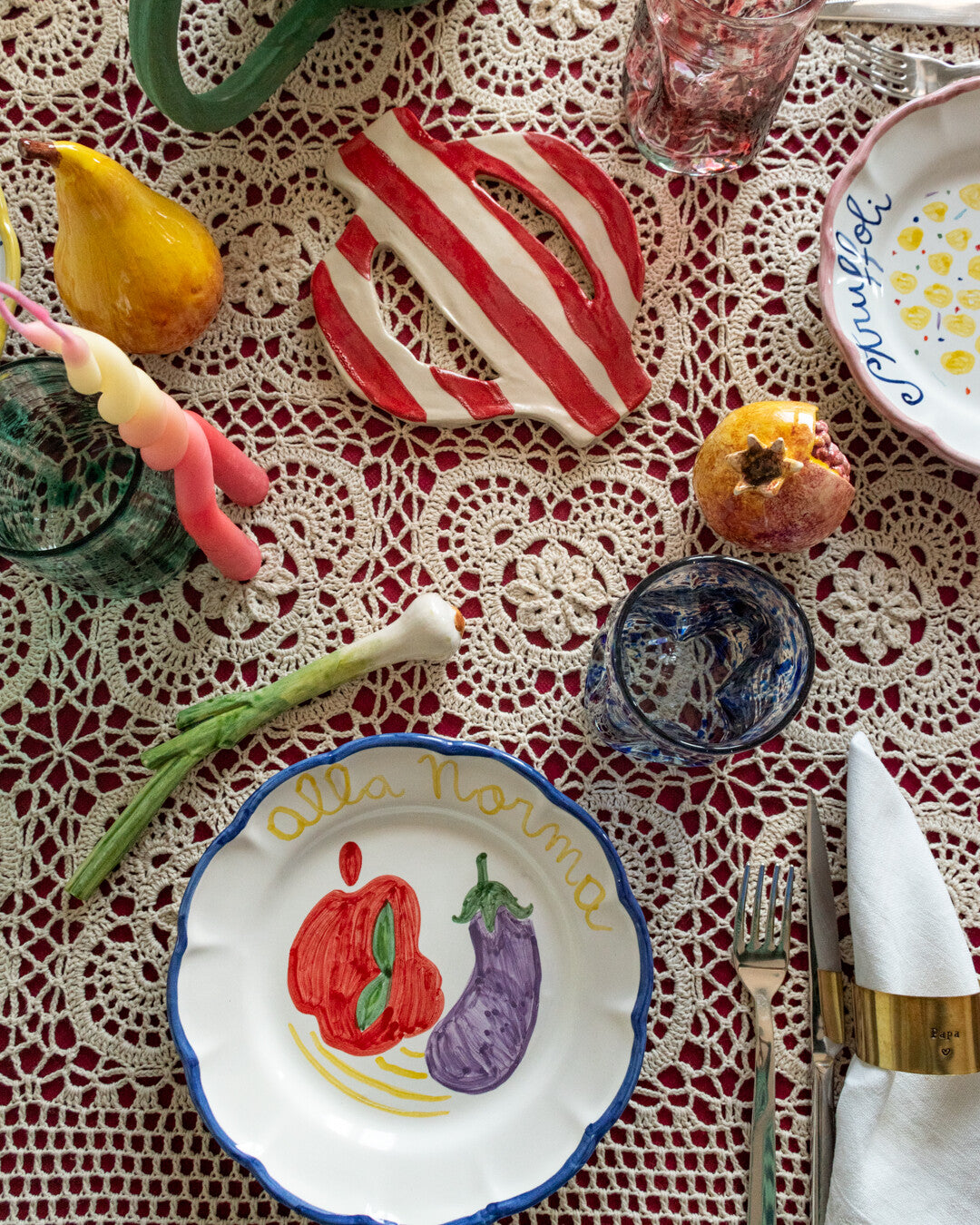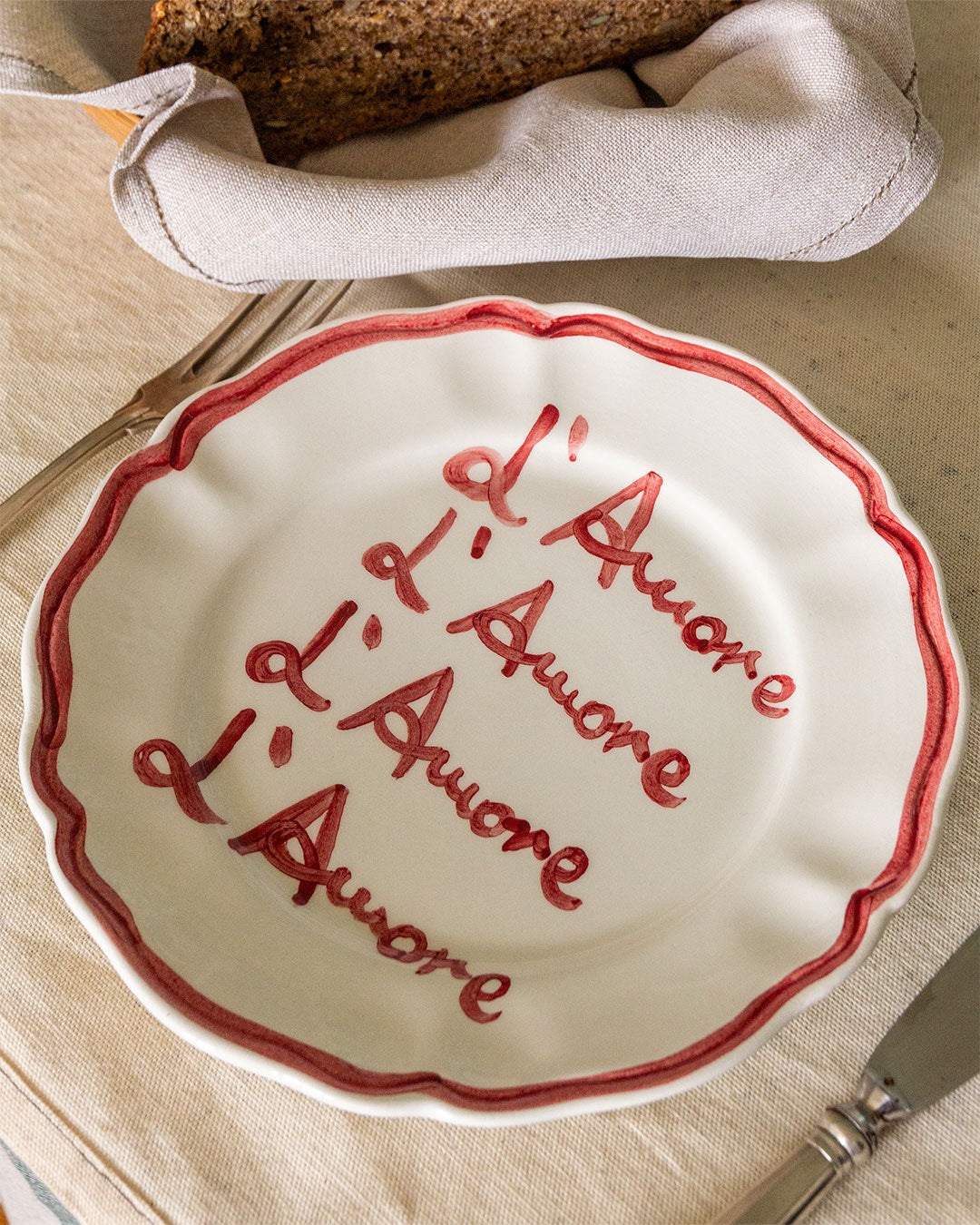Mestieri d’Eccellenza LVMH has announced the 4 winners of the second edition of the Maestri d’Eccellenza Award, organized in collaboration with Confartigianato Imprese, the National Chamber of Italian Fashion and Maison Loro Piana.
The award ceremony, held at the Belvedere in Palazzo Lombardia, showcased the works of the 9 finalists: Antonio Dattis, Cristina Busnelli, Francesco Ballestrazzi, Rinalda Bonazza, Joy Harvey, Jules Vissers, Fabio Molinas, Matteo Tampone, and Giuseppe Toffoli, framed by the digital installation of artist Fabrizio Plessi.
We spoke with the winners of the 2024 edition – read on to learn more!
Maestro Artigiano d’Eccellenza – Antonio Dattis

|
Cabinetmaker, restorer, and luthier - Sava, Taranto
What does receiving the title of Maestro d’Eccellenza mean to you?
Receiving the title of Maestro Artigiano d’Eccellenza 2024 holds deep meaning for me, not only for my work but for my life itself. It’s only now that I realize I’ve reached a milestone I hadn’t considered, as I’ve always been so absorbed in creating my pieces, driven by a personal need: to inspire wonder, both in myself and in those sensitive enough to recognize the craftsmanship behind creating beauty.
Can you tell us about your journey? How did you become a Maestro Artigiano? What were the key moments?
My journey likely started with me. Even as a child, I had a natural talent for craftsmanship—making and building were my favorite games. I was in elementary school, and after finishing my homework, I would rush to a local carpenter's workshop near my home. That’s where it all began, learning the basics of the trade, but with a particular fascination for stringed musical instruments. I wanted to build them, without fully understanding why.
With no financial means to attend one of the few violin-making schools, I tried to learn as much as I could on my own—through books, manuals, and specialized magazines. It was the '70s/'80s, before the internet. At 11, I built my first instruments by copying photos and relying on intuition, as I had never seen a real instrument up close. After finishing school, I worked as an apprentice under master cabinetmaker Ubaldo Milizia, who had worked in Turin for many years. Later, I apprenticed with luthier Alfredo Baroni in Taranto, who had studied in Bologna and trained at the workshop of Ansaldo Poggi. This was the start of my instrument-making journey.
Is there a particular story behind one of your creations that stands out in your career?
One moment I am especially proud of is when, in 2007, an American museum, the MIM in Phoenix, Arizona, purchased one of my instruments: the Ottobasso, a giant double bass standing almost four meters tall. This rare instrument was invented by the French luthier Jean-Baptiste Vuillaume on commission from Hector Berlioz between 1849 and 1851. Of the three original instruments built by Vuillaume, two have been lost, and one is housed in the Musée de la Musique in Paris, restored but non-functional.
Maestro Creatività Artigianale – Francesco Ballestrazzi

|
Milliner - Milan
Can you tell us about your journey? How did you become a Maestro Artigiano? What were the key moments?
My path is somewhat complex, as it wasn’t a career I consciously chose. Rather, I found myself in it after rediscovering a hidden talent following a difficult and challenging time in my life. You try to move forward and pick yourself up, and with some luck, I found myself in the fortunate position of closely observing the final collections of Alexander McQueen (I was working as a showroom salesperson). That’s when I realized I could fill the void in my life with art.
Another decisive moment came after years of working in the window display department at Moschino, when I realized I had a kind of treasure in my hands. Encouraged by my partner and my mentor, who was also my boss, I started this career.
Can you share a story behind one of your creations that you consider emblematic of your career?
One of the first pieces I created was a black lace horse head. I started with a sculpture I made of the head, and using the technique for shaping felt hats, I modeled the lace into a hairstyle. This horse head was a huge success and immediately caught the attention of many people in the fashion industry and beyond. It was one of the first major editorials in which my work appeared. Vogue Italia selected one of my hats for a stylist’s collection, and early in my career, I found myself published in one of the world’s leading fashion magazines, with my hat worn by a young Cara Delevingne, alongside other masters like Stephen Jones and Philip Treacy.
How do you pass on your knowledge to the next generation? What message do you want to leave for future artisans?
I began teaching at universities seven years ago, and I had no idea how much I would love it. I enjoy teaching and trying to instill the passion I have in every student I meet, helping them understand what it means to be an artist and a craftsman. If you have this passion inside you, you must nurture it every day. I always emphasize that the path is difficult, sometimes very painful, and not for everyone—but it fills your heart.
How do you balance your creative vision with the demands of the contemporary market?
This is perhaps the most challenging part of my work and of being an artist. Balancing art and commerce is no easy task. I tried for years to have stores worldwide, but it wasn’t for me. Now, I focus on exclusivity and unique, custom-made pieces that stay true to who I am, without being compromised by commercial demands. I’m determined, so as long as I can, I’ll continue to shape the market to fit me, not the other way around.
Maestro Emergente Artigiano d’Eccellenza – Rinalda Bonazza

|
Lace maker (bobbin lace and knot technique) - Comacchio, Ferrara
What does receiving the title of Maestro Emergente Artigiano d’Eccellenza mean to you, and how will it influence your future?
Being awarded the title of Maestro Emergente Artigiano d’Eccellenza is a great joy and honor because it’s a public recognition of the high-quality craftsmanship behind the winning piece and my overall production of decorative art.
This title will proudly be displayed on my business card, and it makes me feel supported and aware of the value of my craft. My greatest ambition is to collaborate with designers and artists, and now I believe I have a better chance of making that a reality.
What sparked your artisanal project? What was your initial inspiration?
My initial inspiration came from a desire to create decorative art pieces that reflect my appreciation for beauty, made with traditional techniques but expressed in an innovative way, with subjects and styles in tune with contemporary aesthetics. For more than twenty years, I’ve worked on this with passion. In 2019, I visited Homo Faber, which sparked my desire to participate in the renewed interest in decorative arts. In 2022, I founded my company Rizza-Artexture.
Can you tell us about a creation that represents a turning point in your career?
The reproduction of Amorpha, Fugue in Two Colors by Kupka was a pivotal piece. It marked a watershed between my earlier works and those that followed. The earlier pieces were created from top to bottom, following tradition. However, feeling that the traditional method limited my creative vision, I began exploring how to blend bobbin lace and knot techniques more flexibly, working in various directions. The piece was a success, and I consider it emblematic because it allowed me to define the original codes of my personal artistic language.
Maestro dell’Innovazione d’Eccellenza – Fabio Molinas

|
Designer - Calangianus, Sassari
The opportunities offered by the award, such as media visibility and visits to Loro Piana’s facilities, represent a unique chance. What do you hope to learn, and how will these experiences shape your future?
I believe the mentoring program is an invaluable opportunity for professional growth. It’s not every day you get the chance to engage with such established Made in Italy brands like Loro Piana. I hoped to win the award mainly to access this mentorship, and to observe, understand, and make myself understood within a complex yet beautiful system like high-end fashion. Seeing how a brand is structured from the inside will definitely help me position my work within a broader context, meet internal business needs, and recognize the signals of an ever-evolving market.
What role does sustainability play in your work?
Sustainability plays a fundamental role in my craft. In fact, I’ve been working sustainably ever since I began my career as an Industrial Designer. Growing up in Sardinia, surrounded by nature and animals, it was natural for me to incorporate a sustainable model into my work. For me, sustainability goes far beyond the artifact and its production chain; it’s a 360-degree concept that includes social and mental sustainability. We often talk about environmental sustainability but rarely address “psychological” sustainability. If a person’s mind is not balanced or is experiencing burnout, they won’t be able to perform at their best or naturally regenerate, much like a field through different seasons. The best ideas always come from well-rested minds.
How do you innovate your work while keeping traditional craft techniques alive? What’s your approach to balancing the past and the future?
This balance between innovation and tradition didn’t come to me right away. It took years to realize that most of my projects referenced the past but were reinterpreted through a contemporary lens. In the case of new-generation cork materials, I grew up surrounded by it. I remember helping my grandfather in his workshop, sweeping up large amounts of cork dust, and watching artisans work with a resource vital to our region. Around cork, an entire society and centuries of knowledge have developed. These skills form the foundation for creating innovation. They’re not opposing forces but rather part of the same creativity and ideas that have been passed down over the centuries, waiting to be further interpreted. After all, all innovations build upon previous innovations, which with time and culture, become tradition.



